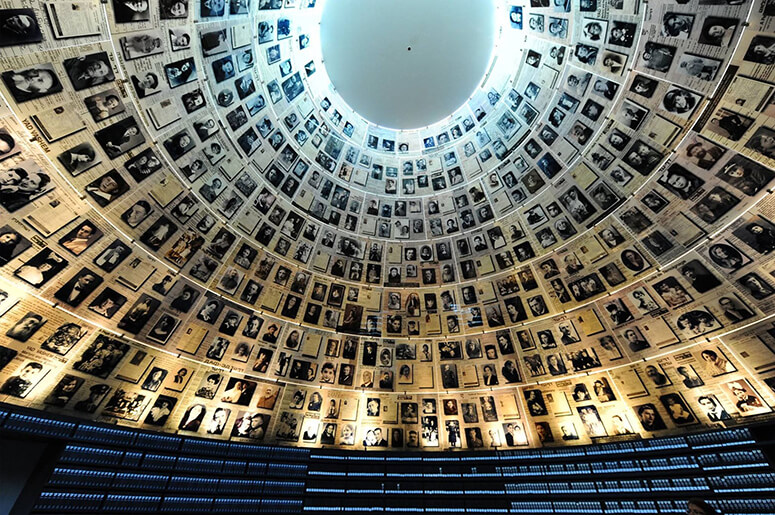Israel beyond the headlines: Where ancient stones speak
Beyond the searing Gaza conflict lies an Israel that resists simple narratives—a land where millennia-old prayers echo through limestone corridors, salt-saturated seas buoy the weightless, and democracy’s defiant chorus resounds amid war’s drumbeat.
As a first-time visitor walking its safe streets in these turbulent days, I found not a nation bowed by conflict, but one radiating resilience and reverence—just as former Israeli Ambassador Ilan Fluss once described.
Where faith and history converge
Jerusalem remains a spiritual epicenter where heaven and earth meet, where Jews, Christians and Muslims pray.

In the Old City’s labyrinthine alleys, time folds in on itself: Armenian monks chant vespers in St. James Cathedral’s candlelit hush; the sweet, woody scent of frankincense thickens the air in the Church of the Holy Sepulchre, where pilgrims trace the path of Christ’s crucifixion; and at the Western Wall, generations tuck handwritten prayers into ancient crevices.
On Mount Zion, the cool stone of King David’s Tomb hums with history, while upstairs, the vaulted Cenacle—venerated as the site of the Last Supper—holds a silence steeped in awe.

From the Lutheran Church of the Redeemer’s bell tower, a panorama unfolds: golden domes, minarets, and synagogues stitched together under a relentless sun. Here, the stones breathe devotion.
Nature’s miracles and modern oases
Israel’s landscapes astonish. At the Dead Sea, Earth’s lowest point (-430m), you float effortlessly in mineral-rich waters, Masada looming like a sentinel. Resorts offer black mud wraps—rituals of renewal older than empires.

Further north, I was overwhelmed by the serene sea view and history of faith in the Sea of Galilee (Kinneret) which shimmers—a freshwater lake steeped in miracles. Here, Jesus walked on water and preached the Sermon on the Mount. Nearby, Capernaum—Christ’s ministry headquarters, where I met a Filipino Catholic nun from San Isidro, Batangas—and the Mount of Beatitudes draw seekers to tranquil slopes.
Another unique place is the Jordan River, whose gentle currents invite swims or baptisms (just mind the rope—beyond it lies Jordan).
Kibbutz farms like Kaila—where 500 cows get five daily cool-down showers—and Neot HaKikar flourish improbably in the Negev desert, their date palms and algae ponds are proof of ingenuity.

In Haifa, the Baha’i Gardens cascade down Mount Carmel in 19 emerald terraces, framing Mediterranean vistas. By contrast, Tel Aviv’s beaches pulse with secular energy: matkot paddleball thwacks, surfers carving turquoise waves, espresso-sipping locals. My seafront room at the Herbert Samuel Hotel opened onto an endless blue horizon.
Though it’s not a tourist destination, I was privileged to have a tour of the Ramban Medical Center, named after the great 12th-century Jewish physician and rabbi Maimonides, because it has the world’s largest fortified underground hospital of 2,000 beds ready for any war attacks. Most of the buildings in this state hospital were donated by Jewish philanthropists and tycoons from the US, Europe, and other regions.

A feast for the senses
Israeli cuisine is a delicious dialogue of diasporas. Begin with hummus—silky, crowned with spiced lamb—then savor shakshuka, eggs poached in fiery tomato-pepper ragout. Sabich bursts from pita: fried eggplant, boiled egg, tangy amba mango pickle. I’m not a veggie person, but I enjoyed the healthy Israeli habit of serving yummy, fresh vegetable salads at the start of every meal.
Markets like Jerusalem’s Mahane Yehuda intoxicate the senses: barrels of briny olives, pistachio mountains, the earthy perfume of za’atar, and knafeh—shredded pastry cradling molten cheese, bathed in rosewater syrup.

As Friday’s sun dips, Shabbat tables bloom with braided challah, ruby wine, and stories spanning generations.
Democracy in motion

Even amid its longest war—ignited by Hamas’ Oct. 7, 2023 attacks—Israel’s lively democracy still endures. Near my hotel, Zion Square erupted one Sunday night in protest: Israelis, young and old, waving “Peace Now” signs, chants ricocheting off Ottoman-era walls in spirited anti-war dissent. However, some formerly centrist and left-leaning Israelis also told me the Hamas attack had made them shift politically to the right.
Near Gaza’s border, makeshift Nova festival memorials stand hauntingly—sunflowers, photographs, and candles honoring 1,200 slain, embodying both grief and resolve.

Institutions like Yad Vashem—where children’s shoes from Auschwitz whisper unspeakable truths—and the Israel Museum, guardian of the Dead Sea Scrolls, stand as fortresses against forgetting.
Why one week isn’t enough
From floating in the Dead Sea at dawn to bargaining in Akko’s Crusader market, from Masada’s cliff-top sunrise to the Western Wall’s dusk prayers, Israel defies haste. Its contradictions—sacred stones beside tech startups, war scars alongside peace vigils—demand contemplation.
Though tourism dipped, 2025 expects 1.3 million visitors, drawn to a legacy written in stone, water, and olive wood.

Yes, war still overshadows this land. But stand where Jerusalem’s walls glow under morning light, join a Tel Aviv rally for justice, or taste pomegranate molasses dripping over labneh in Jaffa—and you’ll know. This is where prophets walked and poets dreamed, where history breathes, boisterous democracy debates, and wonder endures.
Beyond the headlines, mystical and vibrant Israel imprints itself on the soul—a testament whispered in limestone prayers and shouted in public squares, echoing across centuries.


